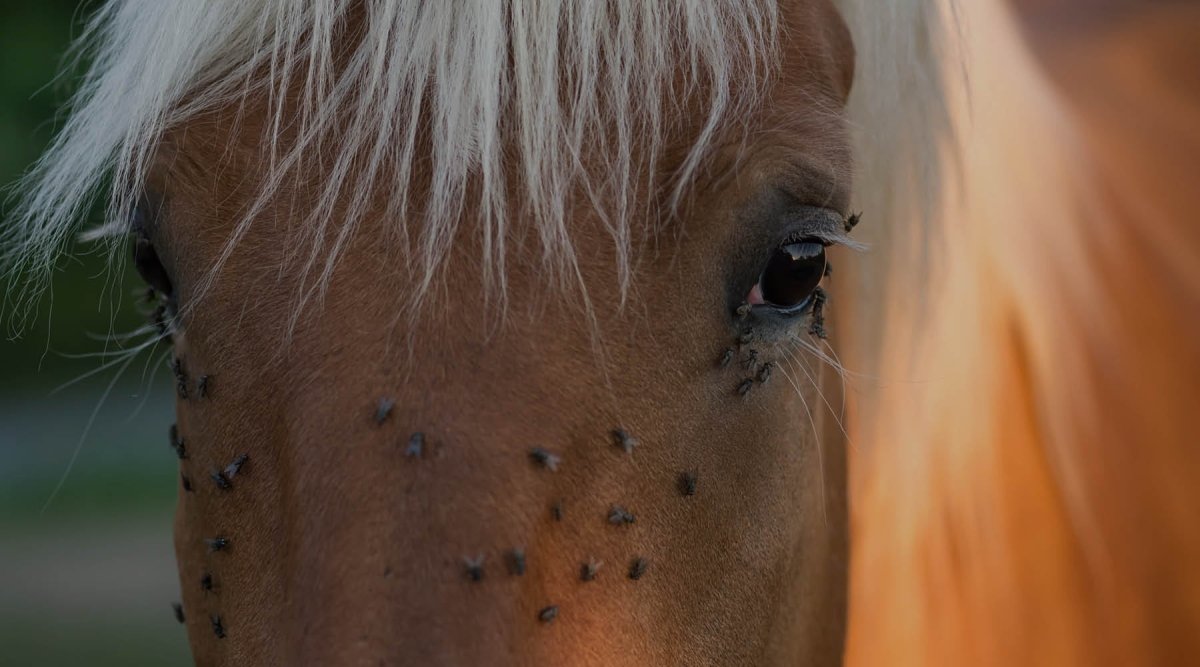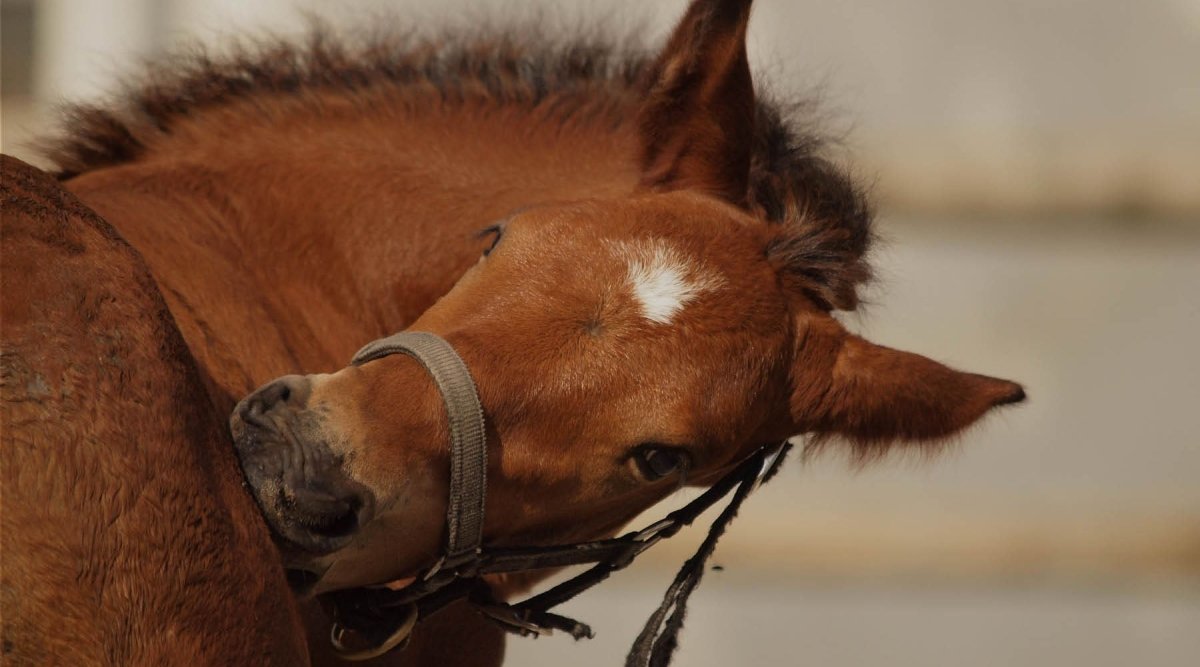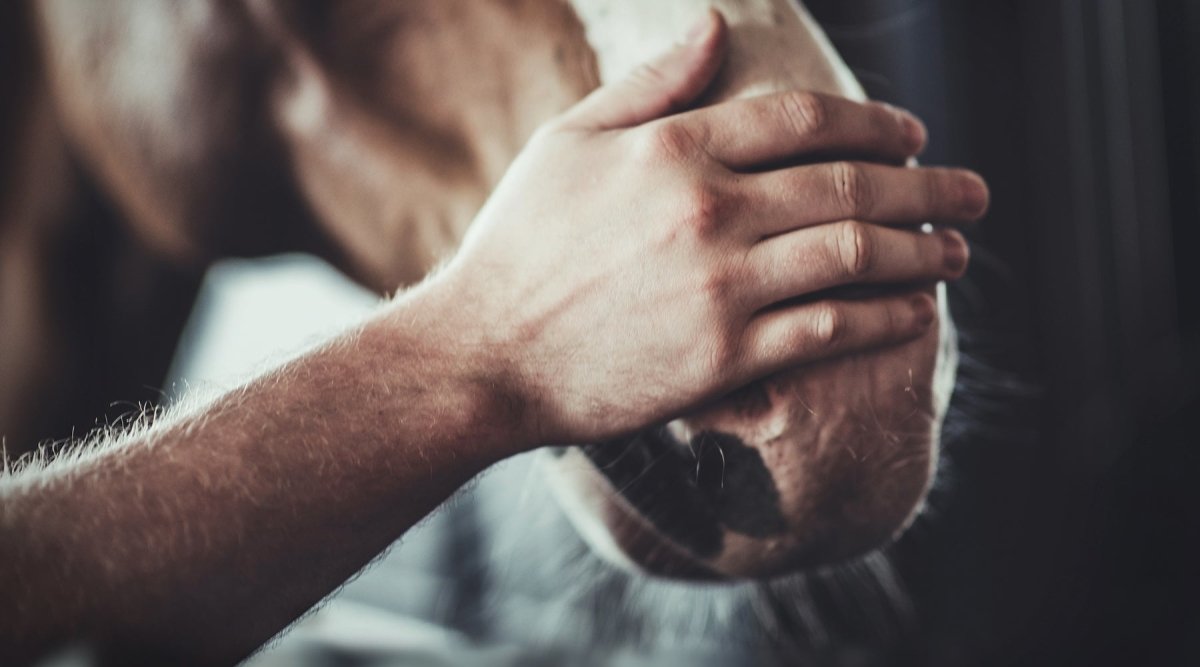In the summer months it's that time of year again: the annoying horseflies cause trouble for horse and rider. The fly-like insects are after the blood of equines and sometimes leave behind disturbing animals. Find out in this article how you as the owner can protect your animal from horseflies and how dangerous the insects can be for your horse.
How dangerous are horseflies?
Horseflies may be small, but they are all the more annoying for horses and riders. They can become a real nuisance and restrict the well-being and even the health of your animal. The beasts cause stress in horses and the constant stress situation has an effect on your horse's immune system.
Horse flies love warmth, so the horse's body temperature is ideal for attracting them. In addition, the parasites are attracted by the horse's scent, sweat and other excretions. The insects have mouthparts with which they cut the animal's skin to create a "blood lake". The insects inject an anticoagulant secretion so that the bite site continues to bleed for several minutes after the bite.
A large number of bites can result in severe itching and pain at the site of the bite. Some horses show an overreaction after a horsefly bite, which can be accompanied by redness and swelling.
Horseflies can transmit various bacteria and viruses - including borrelia, which many horse owners are unaware of. However, animals with a good immune system usually have no problems with this. The situation is different for weakened horses. Under certain circumstances, their immune system may no longer be able to fight the parasites on its own and need support. To strengthen your horse's immune system during the parasite season, we recommend the vitamin C-rich rosehip powder, also available as a whole fruit, or our all-round herbal supplement AniForte® 4in1 Complete Horse.
Stitches around the eye area are particularly sensitive. This is because the itching forces the animals to scratch, which can result in injuries to the eye. You can treat the puncture sites with antipruritic agents. But CAUTION: Make sure they are non-corrosive so that the eyesight is not damaged. Another option would be to pad the eye area with bandages and cloths.
What diseases do horseflies transmit?
Horseflies can also transmit diseases to the animals, but this seems to occur quite rarely in horses. The most common is inflammation of the puncture sites: If the animal scratches and rubs them, a secondary infection with bacteria can develop. This can fester and lead to other reactions.
Otherwise, although diseases transmitted by horse flies are dangerous, they rarely occur in equidae. Possible diseases transmitted by horse flies:
- Hi-virus
- anthrax
- Tularemia
- Lyme borreliosis
- Weil's disease
- Infectious anemia
- Infectious anemia of solipeds / swamp disease
What can be done against horseflies?
Some horses have developed a mechanism of their own to protect themselves from the annoying beasts. They roll around in dust or mud to cover up the smell of horses. This is intended to distract the horseflies and keep them away from the animals.
But as a horse owner, you can also help to ensure that your beloved cloven-hoofed animals are spared the pests. Areas such as swamps or ponds should be avoided during the main season. There are also various household remedies, protective devices or traps that can help to ward off horseflies.
Natural remedies against horseflies
Sprays with essential oils - Essential oils have also proven to be particularly effective against horse flies. The fragrances in these oils mask the smell of the horse's sweat and thus distract the pesky beasts. But pay attention to the correct composition of the ingredients. This is because many sprays and repellents contain synthetic additives that can even have a toxic effect. Essences made from fruit vinegars are often recommended, but these essences in turn attract wasps. We therefore recommend the use of essential oils as a natural remedy.
Ear, nose and face protection against horseflies
Many horse owners swear by ear and nostril covers. These nets are indeed very effective and protect the sensitive areas of the four-legged friends. The protection is also available as a head mask and covers the animal's face, ears and nostrils. However, not every horse is suitable for wearing these insect masks. If your horse has never worn the masks before, you may need to invest some practice and familiarization.
Fly rugs against insects
Fly or eczema blankets are also very popular against horse flies. The blankets are usually thick enough to prevent the insects from biting through. There are also protective blankets against horse flies that also cool the animal in the heat. At the same time, such blankets protect the four-legged friends from UV radiation.
When making your choice, it is best to ensure that the horse's belly and neck are covered. The eczema rug should have an ideal fit so that it does not chafe the horse's skin when it slides around. These rugs are also available in a striped zebra pattern. Many horse owners report positive results.
But here, too, there is the question of familiarization: your horse may reject the rug.
Horsefly trap for stable and pasture
The horsefly trap consists of a net, a black ball and a container filled with a liquid. The ball heats up in the sun and attracts horseflies due to its high temperature and black color. The insects get caught in the net and try to escape. The container is attached above so that the horseflies land in this container when they try to fly and drown. This also prevents the animals from laying eggs and the number of horseflies in the area can be reduced in the long term.
However, these traps are banned in some places or should only be set up during the main horsefly season. In 2020, the NRW Ministry of the Environment issued a decree stating that horsefly traps are not a selective trapping method and that numerous other insect species such as bees and butterflies are harmed in addition to horseflies.
Cooling gels to heal the bite wounds
If your horse does fall victim to these pests, you can relieve the itching and pain with a cooling gel or cooling ointment. Natural remedies containing aloe vera, camomile, marigold or neem oil have a decongestant effect and relieve the itching caused by horsefly bites. The medicinal plants also have an antibacterial and anti-inflammatory effect.
What do horseflies look like?
The horsefly (Tabanus sudeticus) is a subgenus of flies, but is a blood-sucking insect. They also look like flies, only slightly longer and narrower.
The females have a proboscis with which they bite the skin of the host and then suck blood. In horseflies, only the females bite, as they need the protein in the blood to lay their eggs.
These fly-like insects are mainly found near ponds, swamps and wet meadows, where they also breed.
They particularly love warm and humid days, which is their peak flight time. Horse owners should protect their animals at these times or even avoid sweaty outings. The beasts are rarely found in dry areas and in windy conditions. Areas without buildings, hedges and other tall plants that could serve as wind protection are ideal.
When is horsefly season?
The main season for horseflies begins with the warm days in May and lasts until October, depending on the weather. In the fall and winter, the horsefly season is also over and animals and humans are no longer bothered.



